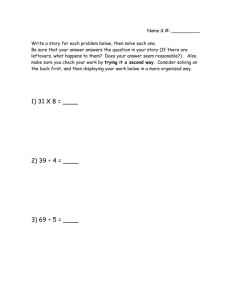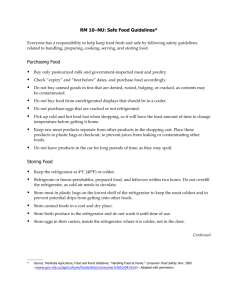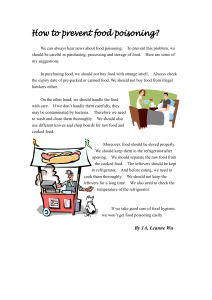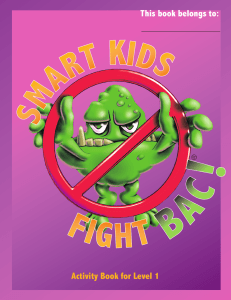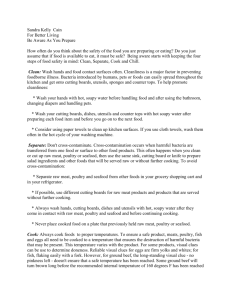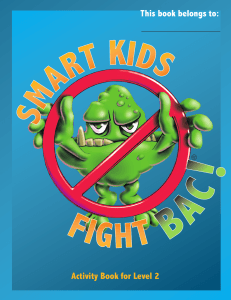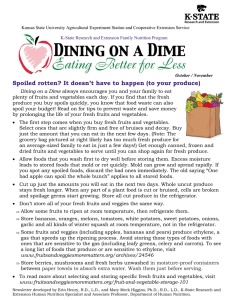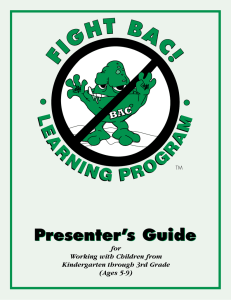Food Safety Personal Practices
advertisement
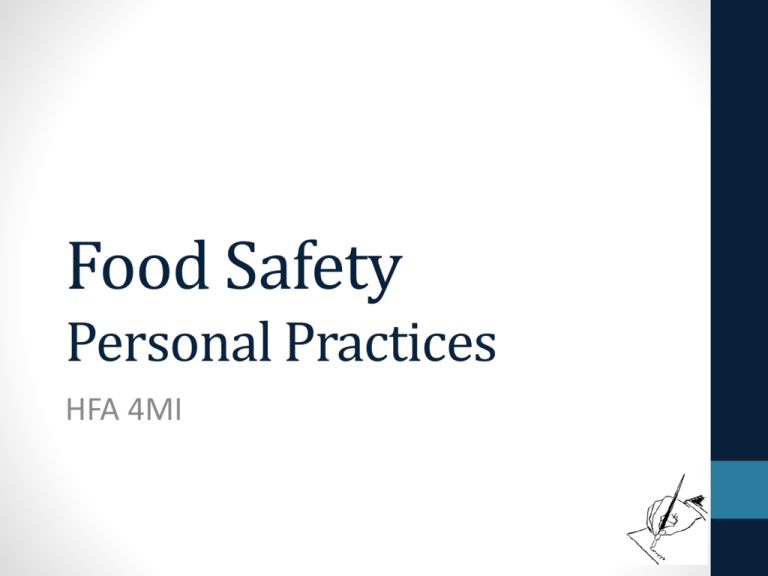
Food Safety Personal Practices HFA 4MI Food Handling and Illness • Food handling practices • Can cause contamination • Can allow microorganisms to grow • Can fail to control growth when intended to do so • All of these practices can cause foodborne illness Fight BAC! CLEAN! Personal Cleanliness: • Wash hands before food preparation, after sneezing, coughing, using the rest room, and touching face or hair • Keep hair away from face • Wear clean clothes/apron (dirty clothing has bacteria) • Don’t handle food with open cut or sore – STAPH • Avoid cooking and tasting with same spoon; licking of fingers is prohibited. • Wash hands after handling raw meat/eggs Handwashing Purpose? • Remove soil • Remove pathogens • Reduce microbial load How it actually works . . . • Soap lather pulls dirt and oily soils from the skin • Lather suspends soils and pathogens which are washed away in running water Hands also . . . • Contact many other things: • Door knobs, stair rails, controls, money, telephones • Pick things up from the floor • Touch the face, hair • Remove soiled clothing • Place things in the garbage Personal Practices Personal Behaviour • Avoid: • Sneezing, coughing or blowing the nose • Can distribute millions of pathogens • Spitting • Contaminates surfaces and distributes pathogens • A sneeze can move at a rate of 150 km per hour! • Hazardous practices while handling food: • Eating or drinking • Chewing gum • Smoking • Droplets of saliva can contain thousands of pathogen cells Fight BAC! SEPARATE! Cross-Contamination • Passing of microorganisms or other harmful substances indirectly from one source to another • Examples: • Cutting board used for raw meat, then salad vegetables • Handling money or using phone then handling food without handwashing Practices that cause contamination • Handling food when ill • Not washing hands correctly • Not wearing clean clothing • Not cleaning and sanitizing food contact surfaces after use • Not protecting food when construction or maintenance are being carried out Avoid cross-contamination • Keep meat and meat juice from vegetables • Keep work areas clean • Use clean spoon for tasting food • Two towels - drying dishes (tea towel)/ wiping hands (paper towel) • Use clean dishcloth each day Fight BAC! COOK! Using heat to control bacteria • Keep hot foods hot • Thoroughly cool hot foods and reheat thoroughly • Bring sauces, soups, etc. to a boil when reheating • Foods should not be in the danger temperature zone for more than two hours • Use a clean thermometer to measure internal temperature • Divide large amounts of leftovers in small, shallow containers for quick cooking Fight BAC! CHILL! Using cold to control bacteria • Keep cold food cold (below 40°F) • Check temperature in refrigerator and freezer periodically; freezer should be at zero degrees or below • Clean refrigerator often • Leftovers stored with tight cover • Thaw frozen foods in refrigerator • Do not leave on countertop to cool
